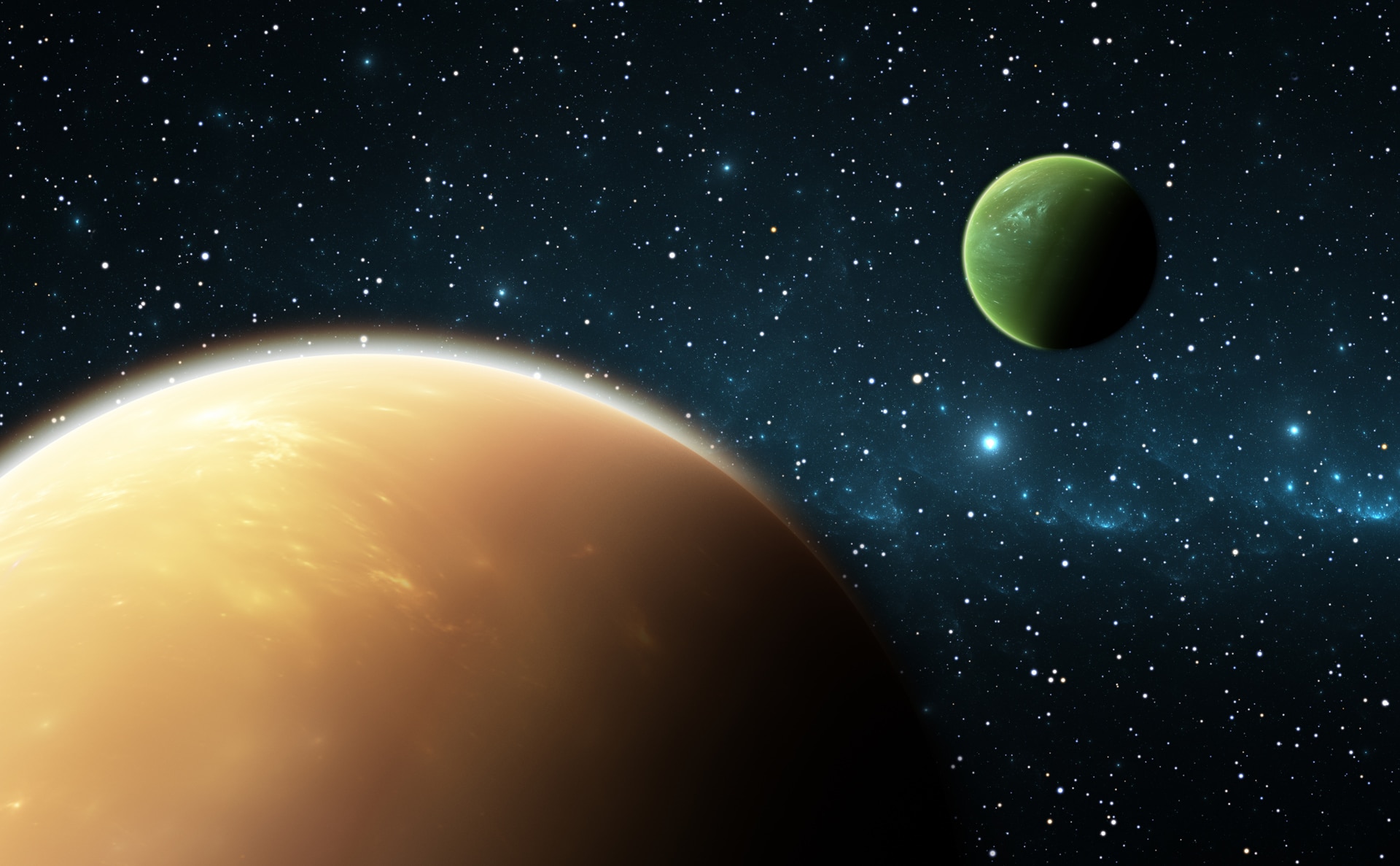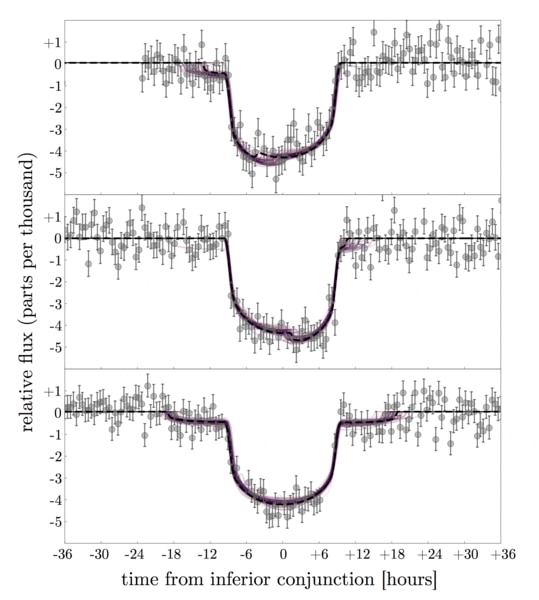Create a free profile to get unlimited access to exclusive videos, sweepstakes, and more!
Update: On the trail of an exomoon

[I feel I need to do a tl;dr here: New observations have been made of an exoplanet that might have an exomoon. There are no results on whether the moon exists or not just yet; this is an update in the work. But it's worth a few minutes to go over what's what, and there's a nifty video below with more info.]
In July 2017, a very interesting research paper was published. In it, a team of astronomers said they had some compelling — but inconclusive — evidence that they may have detected an exomoon, a moon orbiting an exoplanet: A planet around another star.
I wrote about this at the time, because if true it's a very exciting discovery! We've found thousands of planets orbiting other stars, and they come in all sorts of flavors: Big, small, hot, cold, orbiting single stars, binaries, one star in a binary, and so on. But never has there been any evidence of a moon orbiting one of those planets.
The reason for this is pretty simple: They're ridiculously hard to observe. We detect most of these exoplanets using the transit method. From our point of view on Earth, the orbits of planets around other stars can be tilted every which way. But if the geometry is right, and we coincidentally happen to see that orbit edge-on, then once every exoplanet orbit it will pass directly in front of the star. This blocks a teeny amount of the starlight, usually 1% or less, but that's detectable using current tech.
Mind you, that 1% number is what you expect for a big planet like Jupiter blocking a Sun-like star (Jupiter is 1/10th as wide as the Sun, and the area blocked goes as the square of the ratio of their diameters). A smaller planet blocks less light, and that makes the dip in light harder to detect.
You can see (or can't see, I suppose, ha ha) where this is going. Moons are smaller than planets*, so they block even less light. A planet like Earth is hard enough to see using the transit method; our Moon is about ¼ the size of Earth and would block only about 7% as much light as Earth would, making it almost impossible to detect.
But, if you have a really big planet and it happens to have a really big moon, then maaaaayyyyyybe you could detect it.
The planet in question here is Kepler-1625b, which happens to be about the same size as Jupiter. When the astronomers plotted the brightness of the star, the planet's transit is obvious … but weird. It's ever-so-slightly misshapen, and different every time it was observed. They found that a moon about the size of Neptune orbiting the planet would explain the shape of the graph.
But their data are not conclusive, so they didn't want to call it a discovery. They were very careful about this, which was precisely the right move. It didn't stop some media from claiming they had discovered one anyway, though. Sigh.
I'm writing about this now because they have a sort-of update: They observed the star with Hubble Space Telescope, and have new data in hand. They have not fully processed it yet, but one of the team members, David Kipping, wanted to update everyone with how it's going. He made a short video discussing it:
That's very cool! We may know in just a few months whether the data support the idea of this being an exomoon! Or, it may not. We'll see.
Their method was interesting to me. They used the Wide Field Camera 3, one of the very sensitive detectors on Hubble. The star is so bright that it would rapidly overexpose, so they used what's called a grism (a combination of a grating and prism) that spreads the light out over a long row of the camera pixels, reducing the brightness per pixel. That avoids saturating the detector.
Even so, as Kipping points out, they had to do a lot of processing to get the data ready to analyze. Seeing that "charge ramp" issue made me a bit nostalgic for my days working on STIS, a camera on Hubble. I spent a lot of my time figuring out and correcting for a lot of weird things that happen in the camera, so seeing that made me smile.
And it brings me to a point. Two, actually. One is that astronomy is hard. You're not just pointing a telescope at some object, getting a cool picture, and the making some claim about it. You have to understand the camera you're using in extremely fine detail, because eensy weensy problems can completely swamp the effect you're looking for. And no matter how well these detectors are made, they all have issues like that.
What you see is never what you get. I've said this many times, and believe me, when I worked on Hubble that was my entire job.
The second point is that I admire Kipping for making this video. He has the data, and he and his team have been working on it, but they're not quite ready to say anything just yet. He's very clear about that (even to the point of lamenting the media coverage of their first paper). It's an update, because a lot of folks — including me! — are very interested in where they are with this. I also liked that he gave some details on the data and the issues they're having with them. It gives some insight into their process, and, as I pointed out, some of the painstaking work they have to do.
I certainly hope what they find is evidence that the exomoon is real. How exciting would that be? We know moons form easily around planets, especially big ones —Jupiter, Saturn, Uranus, and Neptune have well over a hundred between them, and they come in astonishing varieties. There's no doubt that exomoons outnumber exoplanets in the galaxy, probably by a factor of 10 or more. And there are probably hundreds of billions of exoplanets. That means in our galaxy alone there may be trillions of moons. Trillions.
Finding the first exomoon is therefore kind of a big deal. Let's hope this is it. But remember, they may not find anything. Or worse, they may find evidence the moon doesn't exist. That would be a bummer, but that's science.
You take the good with the bad, because that's reality. Science is really good at that.
* If you had a moon bigger than the planet then the moon would be the planet and the planet would be the moon. Though I suppose you could have a big object made of really low-density stuff (like ice) orbiting a slightly smaller but much higher-density object (made of metal, say), and then the bigger thing would arguably be the moon, but at this point you're arguing semantics and possibly missing the bigger point, which is how totally awesome such a system would be.



























